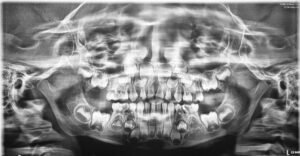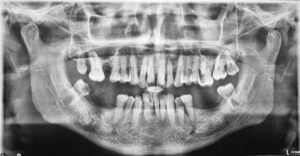To produce a high quality diagnostic image, an OPG machine must correctly capture the patient’s anatomy while maintaining optimal technical characteristics.
1. IMAGE EXPOSURE & CONTRAST: A good OPG should have balanced exposure & contrast providing clear visibility of all anatomical structures. The image should neither be too light (white-out) or too dark (burn-out). Optimal density, clear dentinoenamel junction are few identifying features.
2. ANATOMICAL REPRESENTATIONS: The accuracy with which the OPG represents patient’s anatomy is critical for diagnosis. Correct dental arch shape, symmetry, distinct condyles, uniform mandibular cortex, tongue placement and clear sinus floor are important to appreciate and differentiate the normal and pathological presentation.
3. IMAGE SHARPNESS & RESOLUTION: A high quality OPG has minimal blurring and high resolution which allows the visualization of fine details and thus prevent misdiagnosis.
4. LACK OF ARTIFACTS: No metallic objects, correct lead apron placement & absence of ghost image make the OPG ideal for interpreting.
With “CARESTREAM CS-9600” the OPG image quality is one of the finest where almost all details of anatomical region, in any age group can be interpreted to perfection.
PANORAMIC IMAGES IN DIFFERENT AGE GROUPS 👇🏻




